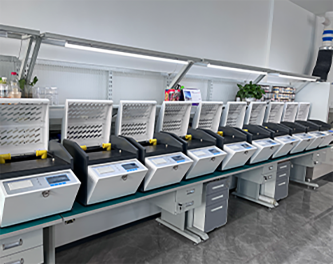 English
English


gas chromatograph analyzer
Understanding Gas Chromatograph Analyzers Principles, Applications, and Future Directions
Gas chromatography (GC) is an instrumental technique widely adopted in analytical chemistry for separating and analyzing compounds that can be vaporized without decomposition. The advent of gas chromatograph analyzers has revolutionized various fields, including environmental monitoring, food safety, and pharmaceuticals, offering a reliable method to quantitatively and qualitatively analyze complex mixtures of volatile substances.
At the core of a gas chromatograph analyzer is the principle of separation based on the partitioning of compounds between a stationary phase and a mobile gas phase
. The sample to be analyzed is introduced into the system, where it is vaporized and carried through a column by an inert gas, typically helium or nitrogen. Inside the column, the components of the sample interact with the stationary phase, a material that coats the inner walls of the column. Different compounds will have varying affinities for the stationary phase, causing them to travel through the column at different rates, resulting in their separation over time.Once the components are separated, they are detected by a variety of detectors, including flame ionization detectors (FID), thermal conductivity detectors (TCD), and mass spectrometers (MS). The choice of detector influences the sensitivity and specificity of the analysis. For example, FID is highly sensitive to hydrocarbons, making it an excellent choice for analyzing petroleum products, while MS provides detailed molecular information that can aid in identifying unknown compounds.
Gas chromatograph analyzers are utilized across numerous industries. In environmental monitoring, GC plays a crucial role in detecting pollutants in air, water, and soil, helping regulatory agencies ensure compliance with environmental standards. In the food and beverage industry, it is employed to analyze flavor compounds, preservatives, and potential contaminants, thus ensuring product safety and quality. The pharmaceutical sector leverages GC for the analysis of raw materials and final products, confirming their purity and compliance with stringent regulations.
gas chromatograph analyzer

The versatility of gas chromatography is further enhanced when combined with other analytical techniques. For instance, gas chromatography-mass spectrometry (GC-MS) is a powerful tool that offers both qualitative and quantitative analysis, making it indispensable in toxicology and drug testing. Similarly, gas chromatography-tandem mass spectrometry (GC-MS/MS) provides even greater specificity and sensitivity, particularly beneficial for detecting trace levels of compounds.
Despite the robust capabilities of gas chromatograph analyzers, researchers and industry professionals continue to seek improvements and innovations. Current trends emphasize miniaturization and the development of portable GC devices, enabling on-site analysis that can provide immediate results without the need for extensive laboratory testing. Additionally, advancements in column technology are aimed at increasing resolution and reducing analysis times, ensuring that gas chromatography remains relevant in the fast-paced realms of analytical chemistry.
Moreover, as the demand for sustainability rises, there is increasing interest in employing gas chromatography for the analysis of renewable energy sources, such as biofuels, alongside traditional fossil fuels. This transition not only highlights the adaptability of gas chromatograph analyzers but also their role in supporting global environmental initiatives.
In conclusion, gas chromatograph analyzers are instrumental in numerous scientific and industrial applications, thanks to their efficiency and precision in separating and analyzing volatile compounds. As technology advances, the future of gas chromatography looks promising, with the potential for enhanced capabilities and wider applications that align with modern analytical needs. Whether in laboratories or field operations, gas chromatography continues to be a cornerstone in the analytical toolkit, driving innovation and ensuring safety across various domains.
-
Differences between open cup flash point tester and closed cup flash point testerNewsOct.31,2024
-
The Reliable Load Tap ChangerNewsOct.23,2024
-
The Essential Guide to Hipot TestersNewsOct.23,2024
-
The Digital Insulation TesterNewsOct.23,2024
-
The Best Earth Loop Impedance Tester for SaleNewsOct.23,2024
-
Tan Delta Tester--The Essential Tool for Electrical Insulation TestingNewsOct.23,2024





